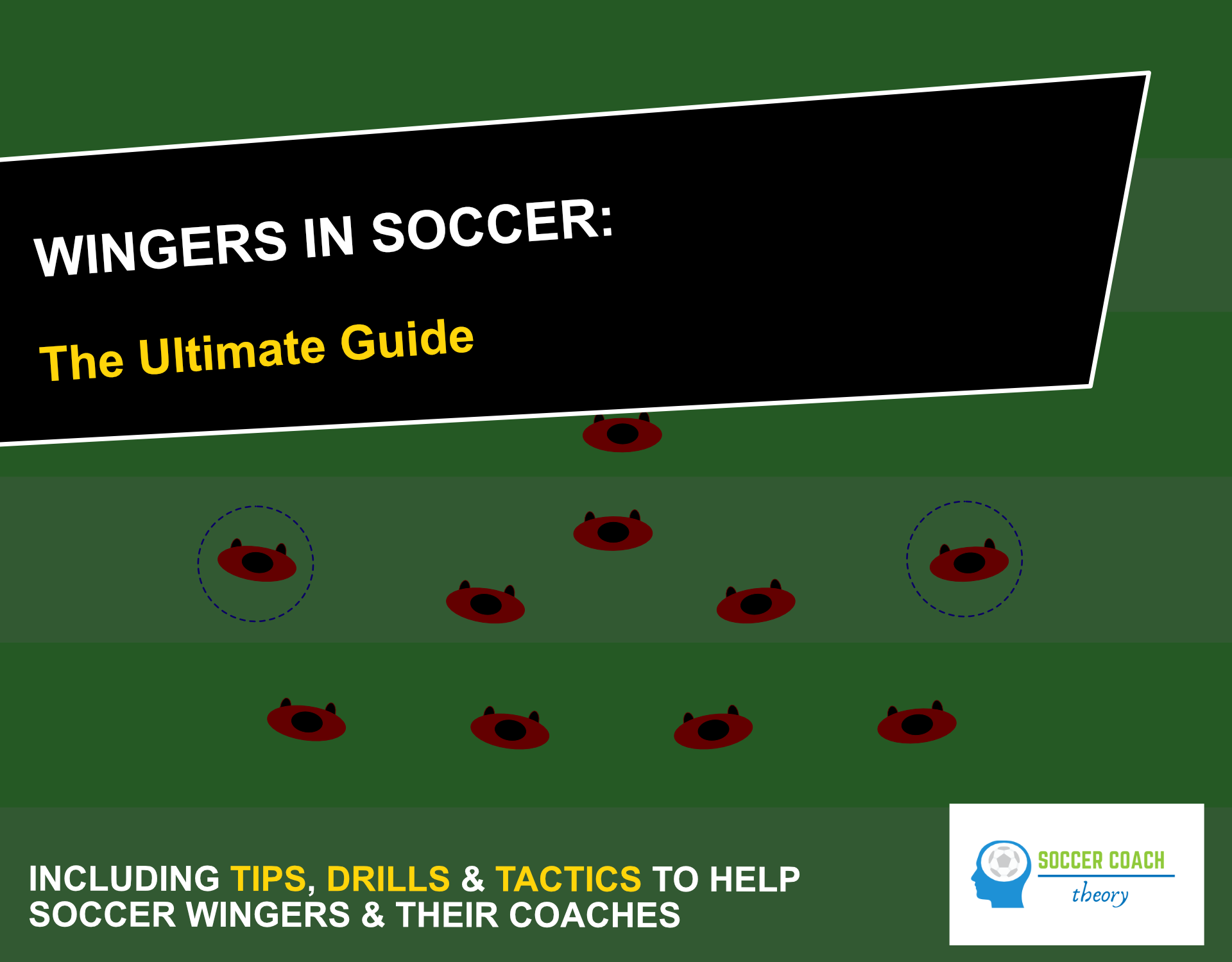Understanding the Soccer Outside Back Position
Do you want to know what it takes to play as an outside back in soccer? Look no further!
In this article, we’ll give you a comprehensive understanding of the position. From its historical context to its modern role, we’ll cover it all.
You’ll learn about the attacking and defensive responsibilities that come with the position, along with some valuable tips and techniques.
So, if you’re aspiring to be an outside back, keep reading for some expert advice!
Introduction to the Outside Back
So you want to know about the Outside Back position in soccer?
Well, let’s start with the basics.
The Outside Back is responsible for defending the flanks and supporting the attack.
Over the years, this position has evolved to become more dynamic and demanding, requiring players to possess both defensive and offensive skills.
The Basics of the Position
Do you know what role an outside back plays in a soccer team?
The outside back is a crucial position in the defense, also known as the full back. As a defender, their main responsibility is to prevent the opposition from scoring goals. They must be strong in tackling, marking opponents, and intercepting passes. However, the outside back also has defensive responsibilities beyond just stopping the opponent’s attack. They need to read the game well, anticipate the movements of the opposition, and make intelligent decisions to neutralize threats.
Additionally, the outside back plays a significant role in the team’s attacking play. They’re expected to support the attack by overlapping the midfielders and wingers, providing width and options for the team’s attacking play.
The Evolution of the Back Position
You should understand the importance of the outside back’s role in the team’s evolution and how they’ve become more versatile in their defensive and offensive contributions.
The evolution of the back position has seen the modern outside back become increasingly crucial to a team’s success. No longer just responsible for their defensive skills, outside backs now play a vital role in supporting attacking players and contributing to the team’s attacking prowess.
With their ability to read the game and make overlapping runs, they create opportunities for their teammates and add an extra dimension to the team’s attacking play. However, they still maintain their defensive role and must be able to handle the pressure of opposing attackers.
The modern outside back has truly become a force to be reckoned with, constantly joining the attack while remaining solid in defense.
Historical Context: From Fullback to Outside Back
In the early days of soccer, fullbacks were primarily responsible for defending and rarely ventured forward. However, with the evolution of the game, the role of the fullback has transformed into the modern-day outside back position.
This shift has seen outside backs become more involved in the attack, providing width and overlapping runs to support the team’s offensive efforts.
The Traditional Role of Fullbacks
You’ll notice that in the past, fullbacks were primarily responsible for defending and rarely ventured forward into the attack. However, the role of the fullback has evolved over time, especially in the modern game. Nowadays, the outside back position is much more dynamic and involves both defensive and offensive responsibilities.
Outside backs, also known as fullbacks, play on the flanks of the field. Their main task is to defend against the opposition’s winger or wide attacker. They must be quick and agile to keep up with the pace of the game and effectively mark their opponents.
But the outside back position isn’t just about the defensive side of things. In today’s game, outside backs are also expected to contribute to the attack. They’re often seen overlapping with the midfielders and providing width on the attacking third of the field. This allows them to deliver crosses into the box or even join the attack themselves.
The Shift to the Outside Back Position
Have you noticed the shift in the outside back position from a traditional fullback role to a more dynamic and versatile position in the modern game?
In today’s soccer, the outside back isn’t only responsible for defending but also for contributing to the team’s attack.
They often play as an additional midfielder, providing crosses and supporting the wingers.
The modern outside back is expected to dribble past opponents, join the attack, and even score goals.
They’ve the ability to tackle and recover possession from attackers, while also being able to deliver accurate passes and crosses.
This shift has changed the way teams play, as the outside back now adds an extra dimension to the team’s attacking play.
The Role of the Outside Back in Modern Soccer
As an outside back in modern soccer, your role is multi-faceted and demanding.
You’re responsible for connecting with wingers and midfielders, providing crucial support in both attack and defense.
You play a vital role in maintaining defensive shape, shutting down opposing wingers, and launching counter-attacks to ignite your team’s offense.
Connecting with Wingers and Midfielders
Can you explain how outside backs can effectively connect with wingers and midfielders in modern soccer?
The outside back position in soccer is a crucial one when it comes to connecting with both wingers and midfielders. Outside backs play a dual role of defending and attacking, making them key contributors to their teams.
When connecting with wingers, outside backs provide support by overlapping and making overlapping runs, creating more attacking options. They can also provide accurate crosses into the box, giving wingers scoring opportunities.
In terms of connecting with midfielders, outside backs need to have strong passing skills to effectively distribute the ball and maintain possession. They can also make overlapping runs into the midfield, creating passing options and opening up space for the attacking midfielder.
Overall, outside backs play a vital role in connecting with both wingers and midfielders, contributing to their team’s success.
Defensive Duties
When defending as an outside back in modern soccer, it’s important to stay disciplined and maintain proper positioning to prevent opposition attacks. Your role is to intercept passes, track the forwards, and deny them any space to maneuver. Playing as a left back or right back, you’re responsible for both defending against the opposition’s attacks and providing support in the final third of the pitch.
You must work closely with the center back to create a strong defensive partnership. Together, you can effectively close down the opposition’s attacks and regain possession for your team. Remember, as an outside back, your defensive duties are vital in maintaining a solid defensive line and keeping the opposition at bay.
Attacking and Defensive Responsibilities
As an outside back, your attacking responsibilities involve advancing the ball down the wing and delivering crosses into the box.
On the defensive end, you must master key techniques such as tackling, marking, and intercepting passes to effectively neutralize opposition attacks.
Understanding and executing these dual responsibilities will be crucial in making a significant impact on both ends of the field.
Advancing the Ball and Crossing
You should focus on improving your crossing technique to contribute to the team’s attacking play. As an outside back in soccer, advancing the ball and crossing are essential skills that can create scoring opportunities for your team.
To improve your crossing, practice drills that focus on accuracy and vary your crosses by using both feet. Assess your options before crossing and aim to deliver the ball to the most dangerous areas in the attacking zone.
Additionally, work on your overlapping runs to support the attacking players and provide an extra option for crosses. While improving your attacking skills, don’t neglect your defending skills. Stay disciplined in your positioning and be ready to quickly transition into a defensive role when required.
Key Defensive Techniques
Maintaining proper positioning and effectively jockeying opponents are key defensive techniques for outside backs. In the outside back position, you play a crucial role in defending and marking the opposition’s attackers. As the last line of defense, you must be capable of handling one-on-one situations and staying responsible for your assigned player. By mastering these defensive techniques, you can prevent the opposition’s attack from progressing and keep your team safe.
However, it’s not just about defending. Outside backs also play a vital role in the team’s attack. They must know when to join the attack and provide support to their teammates in the offensive third. Balancing defensive responsibilities with the ability to contribute to the attack is what makes a well-rounded outside back.
Tips and Techniques for Aspiring Outside Backs
If you want to excel as an outside back, there are a few tips and techniques to keep in mind.
First, focus on perfecting the fundamentals of the position, such as your positioning, marking, and tackling abilities.
Additionally, make sure to study and understand the more advanced aspects of the outside back position, such as overlapping runs and providing support in the attack.
Perfecting the Art of the Outside Back Position
Mastering the art of the outside back position requires precise timing and positioning on the field.
As a soccer outside back, you play a crucial role in modern soccer. Teams rely on you to not only excel defensively but also contribute offensively.
In advanced positions, outside backs have the opportunity to create scoring opportunities for their team.
To perfect your skills in this position, consider seeking free soccer training resources that focus on the specific demands of outside backs. These resources can help you understand the tactical nuances and technical abilities required to succeed in this position.
Remember, outside backs aren’t just defensive players; they’re offensive threats too. So, work on your attacking abilities and make sure to contribute to your team’s scoring efforts.
With dedication and practice, you can become an exceptional outside back in the world of soccer.
Understanding Advanced Positions
Understanding advanced positions, you can elevate your performance as an outside back and contribute significantly to your team’s success. As an outside back, you play a crucial role in both the offensive and defensive aspects of the game.
Offensively, you’re responsible for making overlapping runs on the flank, providing width to your team’s attack.
Defensively, you’re responsible for marking opposing players, often engaging in one-on-one battles. Maintaining proper spacing with your center backs is essential to ensure defensive solidity. Additionally, you must be aware of creative players who may try to exploit gaps in the defense.
Free Soccer Training Drills for Outside Backs
Looking to improve your skills as an outside back? Here are some free soccer training drills that will help you enhance your attacking play, improve your defensive abilities, and prepare you for different game scenarios.
These drills will provide you with the necessary tools to excel in the outside back position and make a significant impact on the field.
Drills to Enhance Attacking Play
Try incorporating these attacking play drills to improve your performance as an outside back.
As an outside back, it’s important to contribute to your team’s offensive efforts. One key aspect of attacking play is making overlapping runs. By timing your runs well and communicating with your teammates, you can create space for yourself and provide options for the attacking players.
Another important skill for an outside back is being able to beat the opposition’s outside defenders in one-on-one situations. Work on your dribbling, feints, and changes of pace to become a threat down the flank.
Additionally, focus on your ability to receive the ball under pressure and keep the ball moving quickly to maintain the team’s attacking momentum.
These drills will help you become a more well-rounded outside back, both in defensive and offensive aspects of the game.
Defensive Drills and Scenarios
Practice these defensive drills to improve your positioning and decision-making as an outside back. As an outside back, you play a crucial role in the team’s defense. You often find yourself in one-on-one defending situations, where your good defensive skills are put to the test. These drills will help you develop the ability to make quick decisions and react effectively to defensive scenarios.
One important aspect of playing on the flank is dealing with overlapping runs from the opposing team. These drills will help you understand how to position yourself and anticipate these runs, allowing you to effectively defend against them. Additionally, they’ll enhance your ability to receive the ball and make smart decisions in high-pressure situations.
Conclusion
So there you have it, a brief overview of the outside back position in soccer. From its historical roots as fullbacks to its modern role in both attack and defense, outside backs play a crucial role in the game.
Aspiring outside backs can benefit from tips and techniques to improve their skills, and free soccer training drills can help them hone their abilities. Whether you’re an outside back yourself or just want to understand the position better, this article has provided valuable insights into this important role on the soccer field.







